Best classical guitars 2025: nylon-string guitars for every budget
From classical, flamenco and crossover, to acoustic-electric models and beyond, these are the best nylon-string guitars around right now
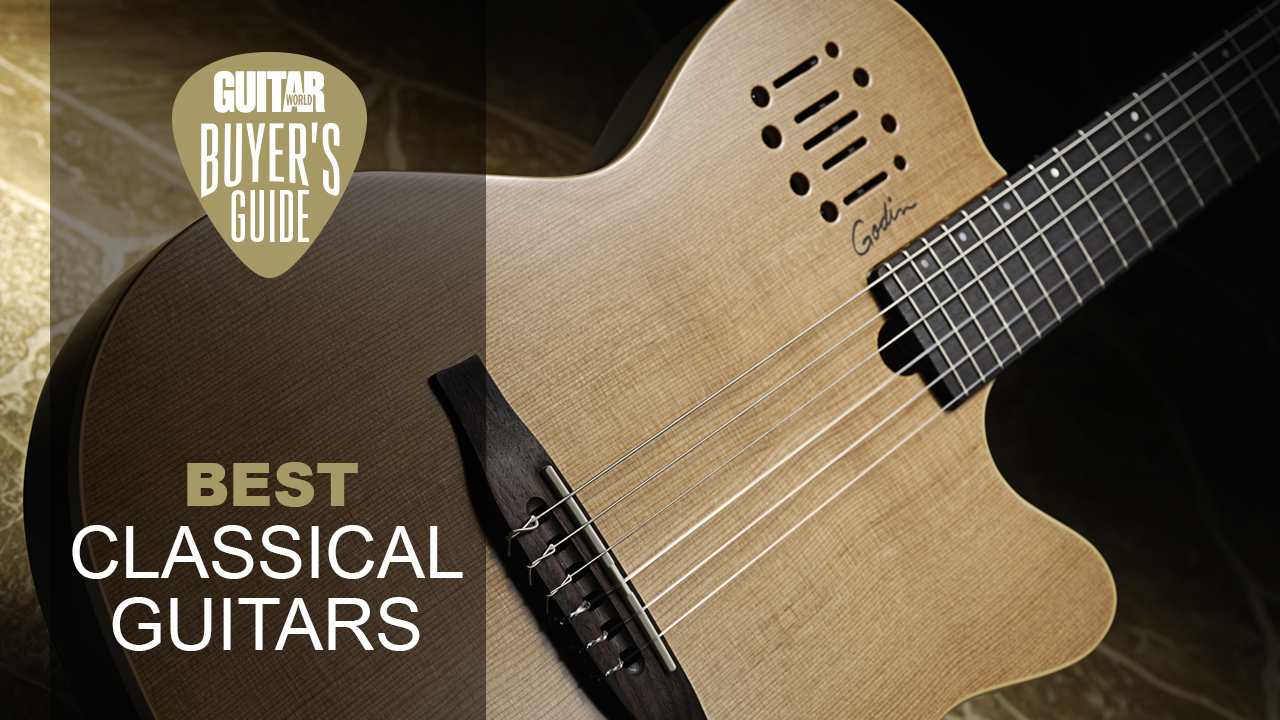
Many guitar players will dismiss instruments with nylon strings as something that’s only really for beginners. The truth is that the best classical guitars will give you the same nuance and dynamic response as any quality acoustic, whether you want to play classical standards, flamenco, jazz, or anything else.
Classical guitars will typically have a flat fretboard and strings that are spaced further apart than that of a regular acoustic, which is necessary to allow you to play complex parts from the classical repertoire. Classical and flamenco are typically for solo performers, so you’ll need this flat fretboard to play both the bass and treble parts simultaneously. If you’ve never played this kind of fretboard before it can be a little intimidating at first, but perseverance will reward you with a serious upgrade in your guitar skills.
If this is your first classical guitar purchase then make sure you have a look at our buying advice section before you make a decision, as it features loads of common questions around the subject answered by the expert writing team here at Guitar World. If you already know your rasgueado from your tirando, then keep scrolling for our top picks…
On the hunt for guitar gear savings this Black Friday? Shop our handpicked selection of the best Black Friday guitar deals.

Chris Corfield is a journalist with over 12 years of experience writing for some of the music world's biggest brands including Orange Amplification, MusicRadar, Guitar World, Total Guitar and Dawsons Music. Chris loves getting nerdy about everything from guitar gear and synths, to microphones and music production hardware.
Best classical guitars: Quick list
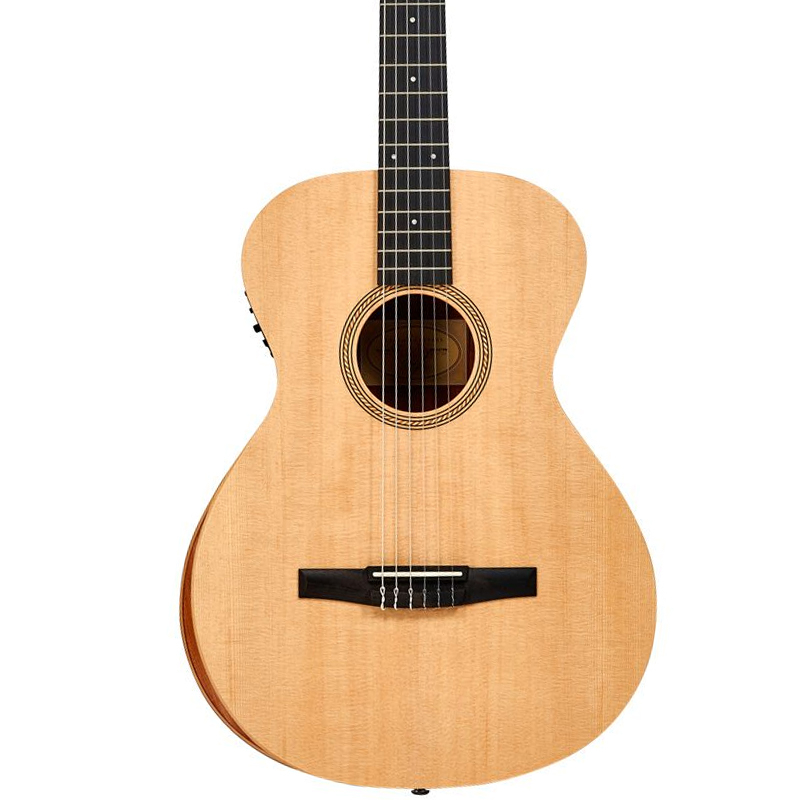
Designed to straddle the line between the full-fat Taylor experience at a relatively affordable cost, the Taylor Academy 12e-N is an incredible quality classical guitar with the playability of a regular steel string acoustic instrument.
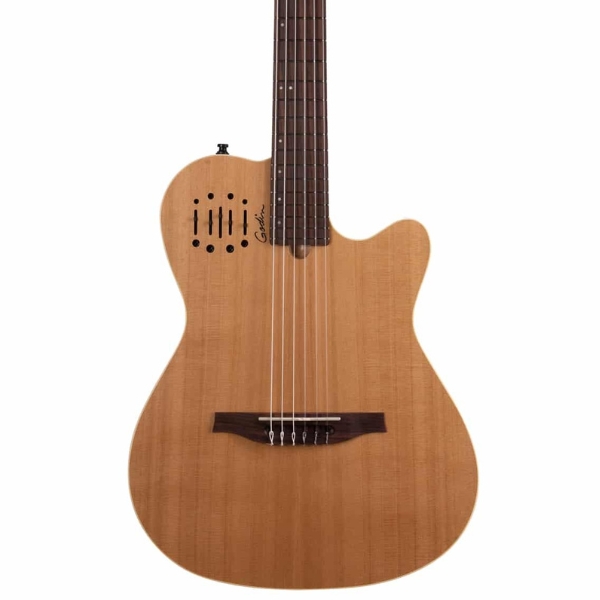
If you're planning on playing your classical guitar live, the Godin MultiAc Nylon Encore combines an under-saddle piezo with two transducer pickups attached to the underside of the body top, giving you a huge range of plugged-in tones.
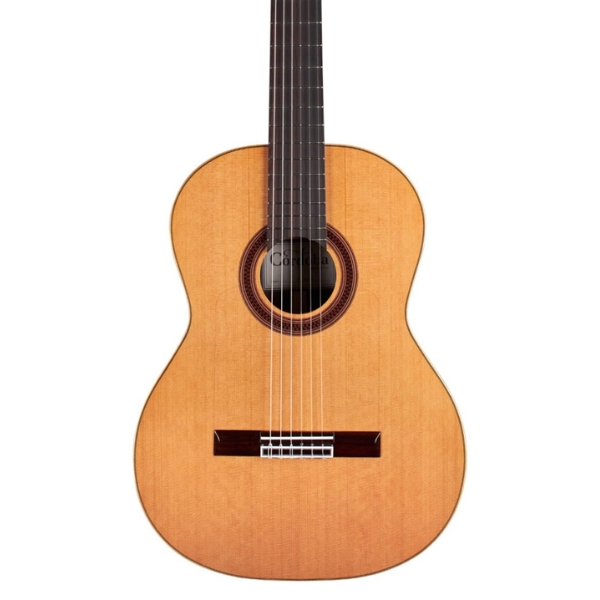
Named for the flamenco legend Paco de Lucia and based upon some of his own collection, the Cordoba F7 Paco is perfect for the guitarist looking to play flamenco styles. It's comprised of excellent materials and is competitively priced too.
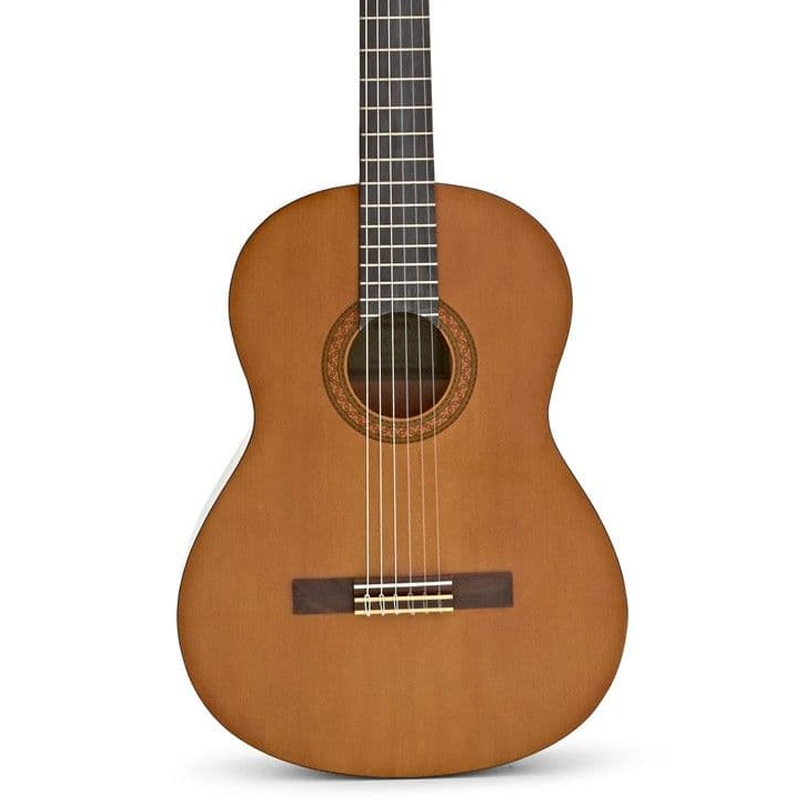
Found in music rooms all over the globe, the Yamaha C40II is the perfect classical guitar for beginner players, and those on a budget. Don't let the price fool you, this is a fantastic-sounding and playing instrument that will get you off on the front foot.
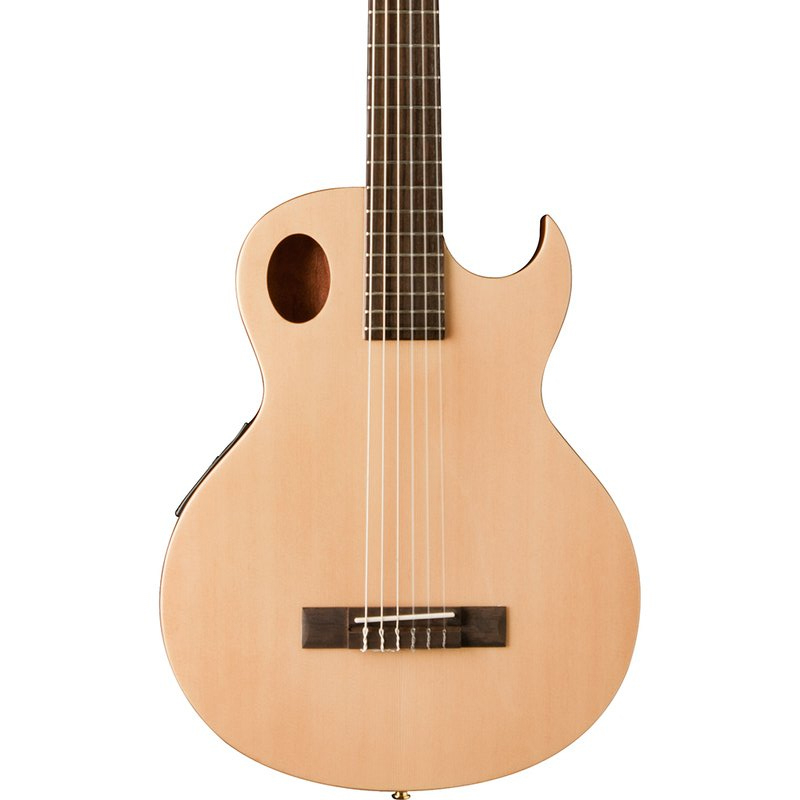
With its dimensions similar to that of a traditional, steel-strung acoustic guitar and a generous cutaway, the Washburn EACT42S is a brilliantly playable classical guitar. The looks may be divisive and put some off, but we love it
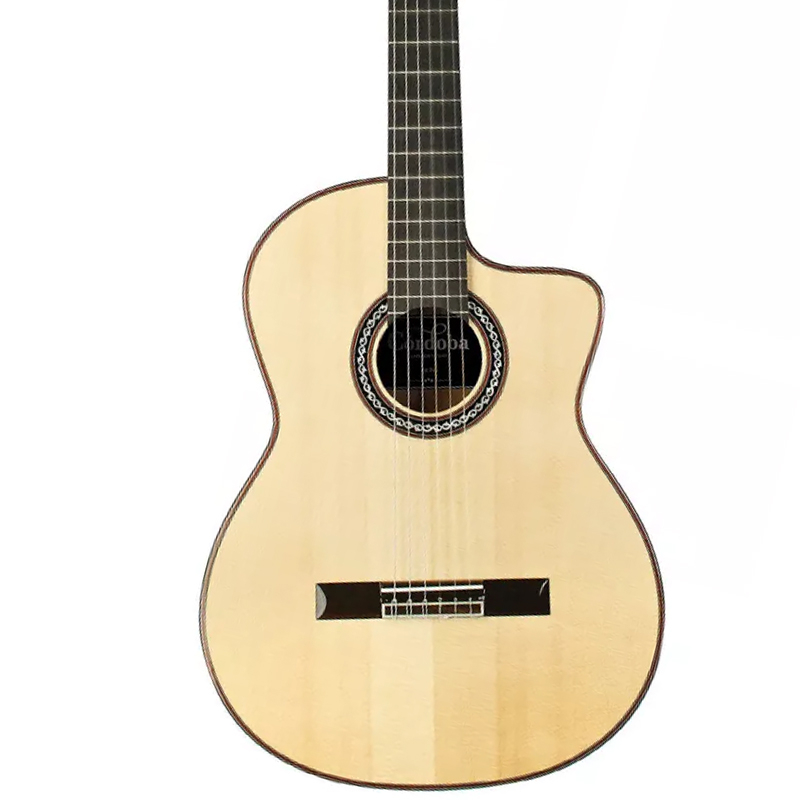
If you want the very best of the best from a classical guitar, it's hard to look past the elite-tier Cordoba GK Pro Negra. Premium tonewoods combine with a thinner-than-usual body depth to give you an ultra-playable, excellent-sounding classical guitar.
The best classical guitars available today
You can trust Guitar World
Below you'll find full and detailed write-ups for each of the best classical guitars in our list. We've tested each one extensively, so you can be sure that our recommendations can be trusted.
Best classical overall
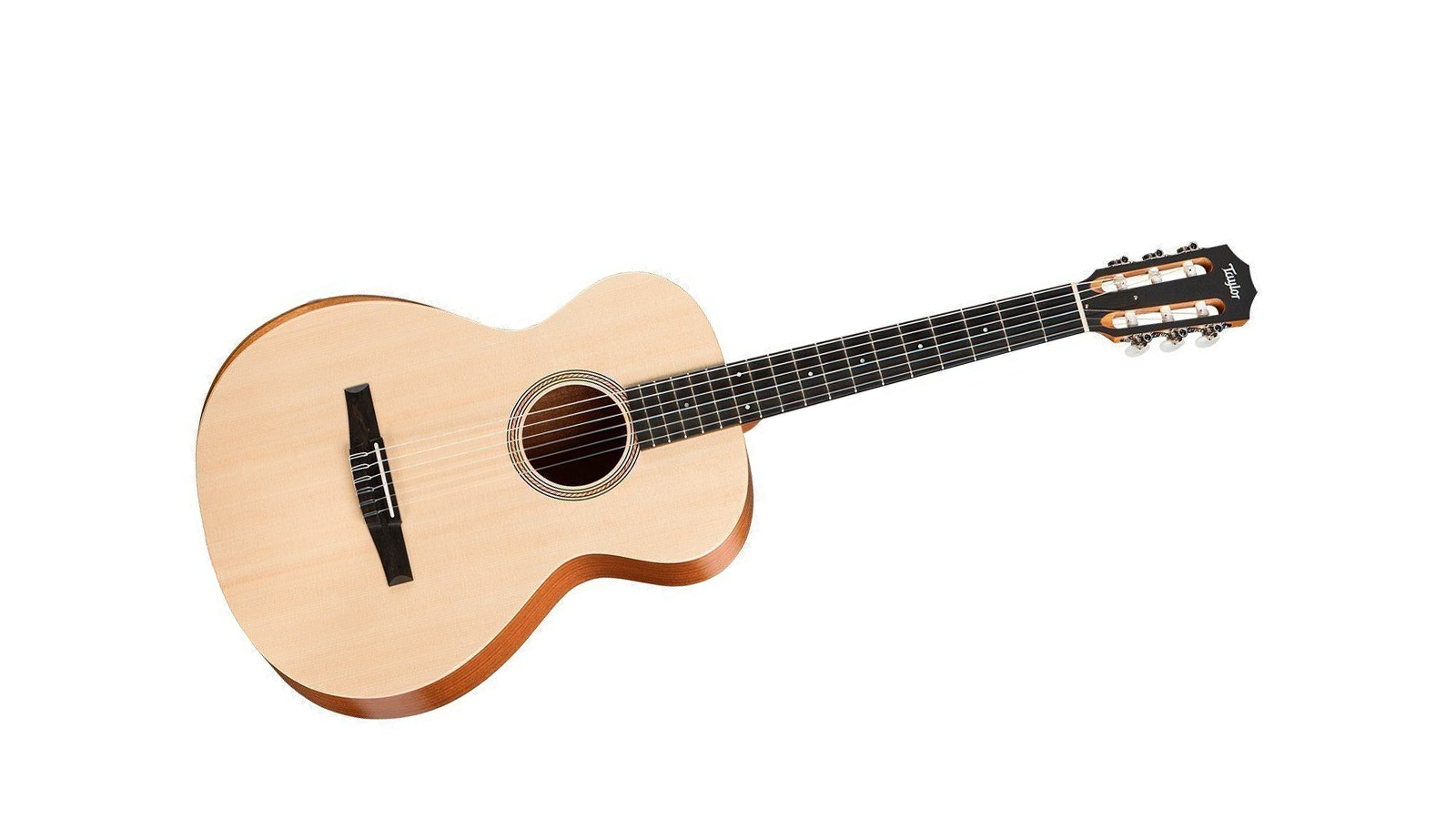
Specifications
Reasons to buy
Reasons to avoid
✅ Buy if you want the best combination of quality and affordability: Giving you the experience of a more expensive Taylor guitar at a lower price point, this nylon-strung acoustic is an excellent value option for a new classical guitar.
❌ Avoid if you prefer a wide neck: To aid playability this guitar has a narrower neck and a slightly radiused fretboard, which may put off those who prefer more traditional, classical guitar necks.
Taylor is seeing some great successes from its Academy line, which promises the full-fat Taylor experience at a cost that makes them – at least relatively – affordable for the many. The Taylor Academy 12e-N is a superb nylon-strung option that provides the benefits of classical and flamenco styling with the ergonomic familiarity of a more standard steel-strung guitar.
We particularly liked the beveled armrest which made for a nicely comfortable playing experience, while we were impressed with how the onboard electronics retained the guitar’s natural resonance even at higher volumes.
Read our full Taylor Academy 12e-N review
Best for gigging
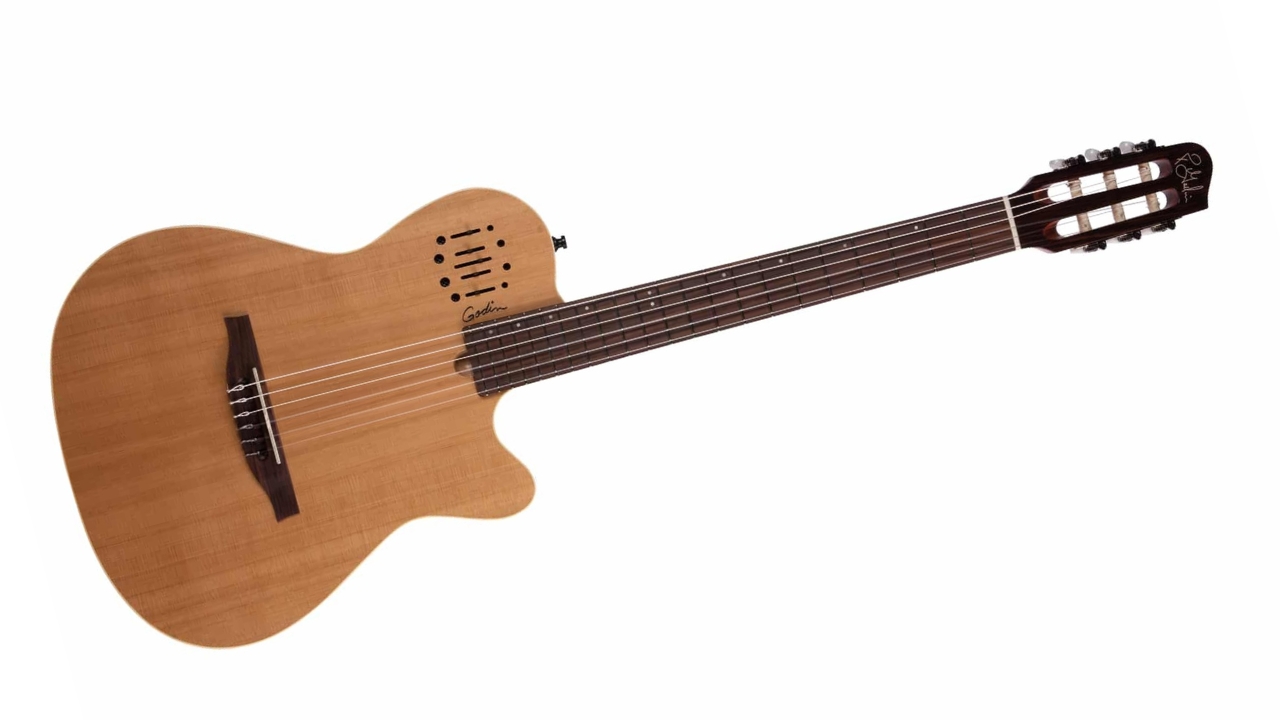
2. Godin MultiAc Nylon Encore
Our expert review:
Specifications
Reasons to buy
Reasons to avoid
✅ Buy if you want to play live: With its combination of piezo under-saddle pickup and transducer pickups, you can get a massive selection of sounds through a PA or acoustic amp.
❌ Avoid if you prefer to play unplugged: Due to the construction of the guitar, it's not the loudest unplugged so not for those who prefer the traditional sound of a classical instrument.
If you’re looking for a classical guitar to play exclusively amplified, the Godin MultiAc Nylon Encore gives you a huge selection of quality tones to pick from. The unusual design won’t please any classical guitar purists out there, but we couldn’t think of many better choices for the gigging player.
When unplugged the sound is of course a little muted. It’s perfectly usable for practicing by yourself, and the projection is surprising considering the narrow depth of the body. The neck profile is a ‘D’ shape which will suit players coming from an electric guitar-playing background.
Plugged-in is where this guitar really works its best though, with a combination of piezo and transducer pickups underneath the top working together with the sliders on the upper bout to give you a huge range of different tones. From flamenco, jazz, and more percussive sounds it’s a super versatile instrument, perfect for the guitarist who likes to play lots of different styles on stage.
Best flamenco guitar
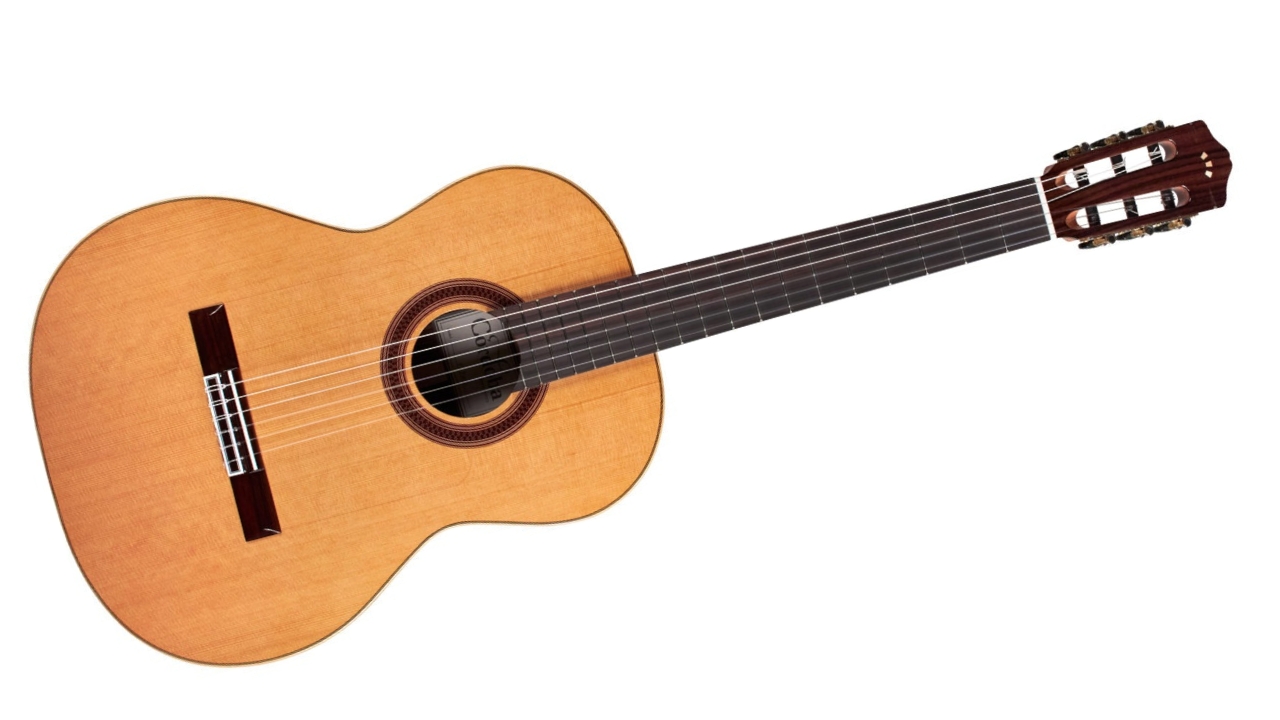
3. Cordoba F7 Paco Flamenco
Our expert review:
Specifications
Reasons to buy
Reasons to avoid
✅ Buy if you want to play flamenco: Based on the guitars of legendary flamenco player Paco de Lucia, this guitar combines awesome build quality with value for money making it a brilliant flamenco guitar.
❌ Avoid if you prefer traditional instruments: It's lighter and narrower than a traditional classical and features a dual-action truss rod, which might put off some purists.
The Cordoba F7 Paco Flamenco is a tribute to legendary player Paco De Lucia, inspired by some of his favorite instruments from his own collection. It’s incredibly value for money and if you’re looking for a flamenco guitar, we can think of no better place to start.
The solid cedar top and rosewood combination deliver a lively sound and fast response that’s perfect for tremolo, picado, golpe, and any of the other flamenco techniques. The low action and flat neck make barre chords and fast single-note playing much easier too.
It’s not just a one-trick pony either. It’s more than comfortable enough dealing with classical standards and jazz, giving you fantastic note separation when playing complex chords. Sitting around the $500/£500 mark, the price is the perfect blend of excellent build quality and materials with relative affordability.
Best on a budget

4. Yamaha C40II
Our expert review:
Specifications
Reasons to buy
Reasons to avoid
✅ Buy if you want a beginner classical guitar: Perfect for beginners or those on a lower budget, the Yamaha C40II is excellent value for money.
❌ Avoid if you're an advanced player: If you already have a few classical guitars, this is unlikely to add anything to your existing collection.
While the transition from ¾ scale nylon-strung acoustic to either steel-strung acoustic or electric is a tale as old as time, there are some who prefer a path less-trodden. Graduating from a ¾ scale up to a full-size nylon-stringer makes for the ideal next step in the playing career of plenty of players, and in the Yamaha C40II there is the perfect guitar with which you can make that leap.
In keeping with Yamaha’s generally excellent reputation for quality levels which exceed their price tags, the C40II classical guitar delivers a superb playing experience, great sound and solid construction which should see most players through the next few years of their musical journey.
Read our full Yamaha C40II review
Best for playability
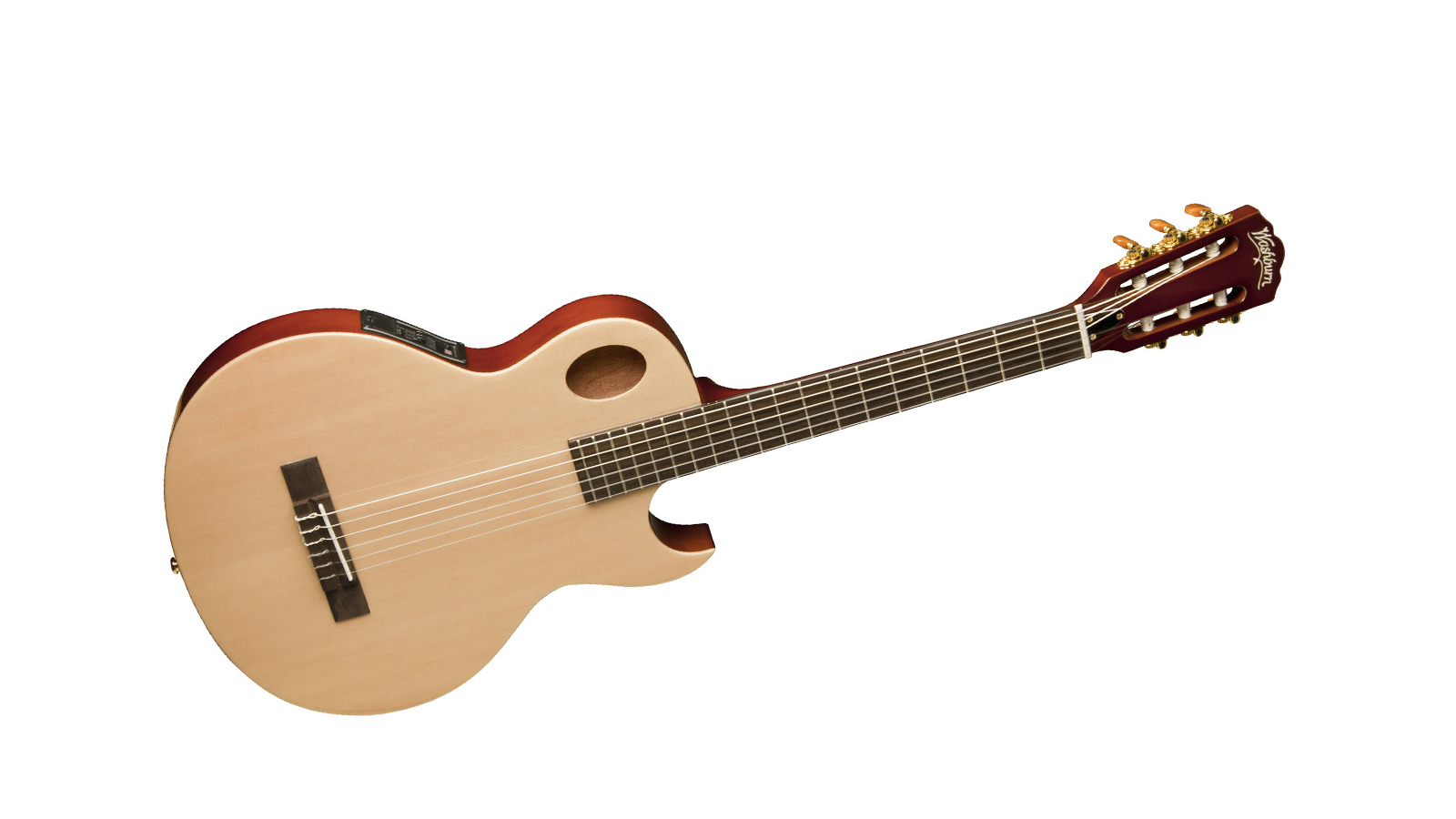
5. Washburn Festival EACT42S
Our expert review:
Specifications
Reasons to buy
Reasons to avoid
✅ Buy if you want a playable classical guitar: With dimensions that are more like a steel-string acoustic, this guitar will feel instantly familiar to players making the move to classical.
❌ Avoid if you like traditional instruments: The looks alone are probably enough to put off the purists here, but this guitar plays decidedly differently from a regular classical guitar.
It’s not unknown for players of different styles to dabble with a bit of fingerpicking, if the mood dictates. In the Washburn Festival EACT42S there exists almost the perfect guitar for a bit of musical escapism. Featuring dimensions and scaling not dissimilar to a more traditional acoustic, but with enough trappings to ensure it excels as a nylon-string, the Festival offers a superb entry-point to ‘proper’ classical guitars.
We appreciated the unfettered access to the upper frets, while the 4-band EQ ensured we had a huge amount of control over our amplified tone. It might not be everyone’s cup of tea visually, but we felt the Washburn Festival delivered a lot of guitar for the money.
Best high-end option
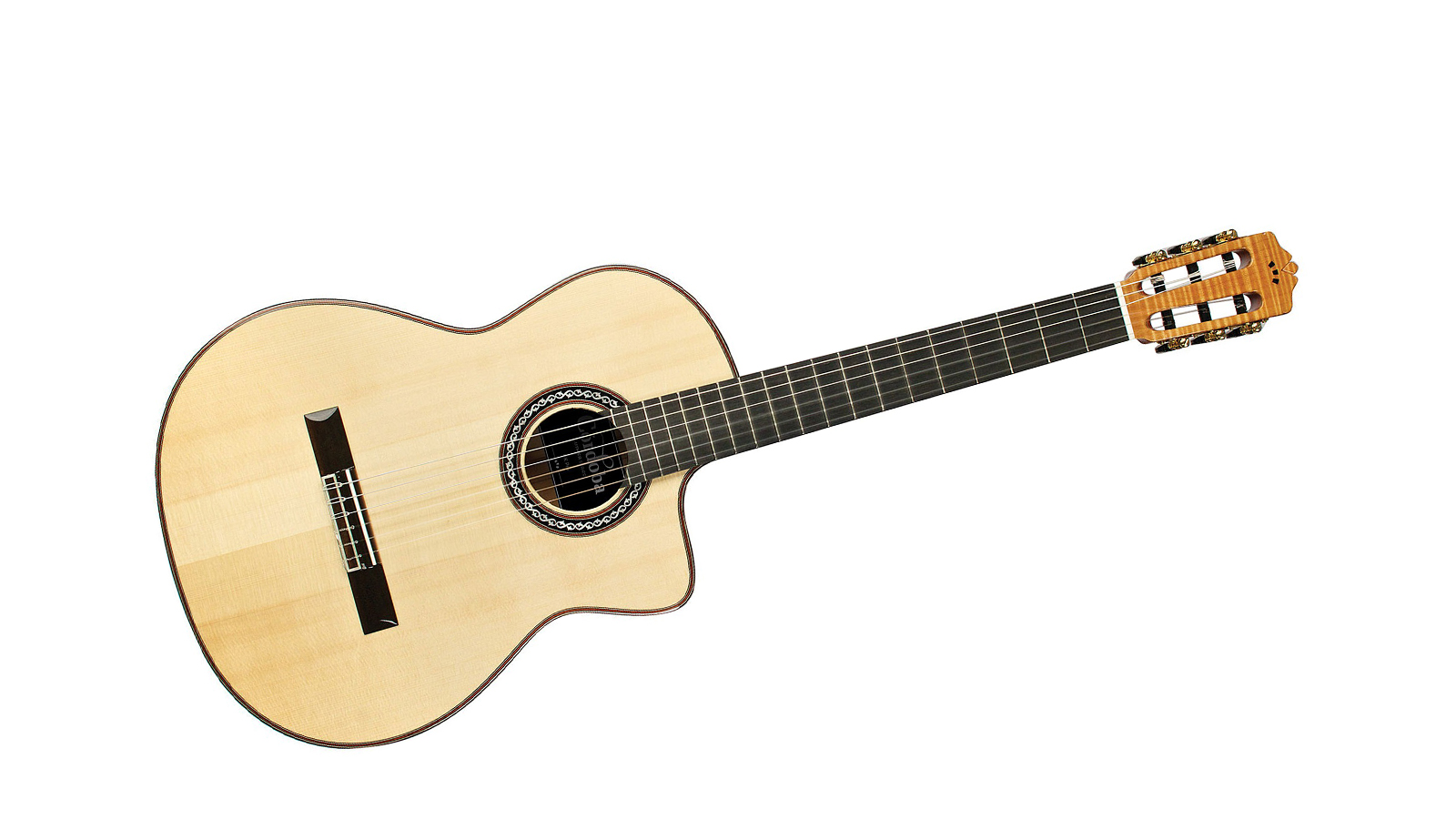
6. Cordoba GK Pro Negra
Our expert review:
Specifications
Reasons to buy
Reasons to avoid
✅ Buy if you want a top-of-the-range classical: This is a premium instrument made from the finest tonewoods and specifically crafted for professional players.
❌ Avoid if you're on a budget: This level of build quality and materials doesn't come cheap, so this guitar comes with a hefty price tag.
Often when you’re looking for a particular type of guitar, it pays to see what the pros are using. When you’re looking for something that can handle the rigours of full-blooded flamenco, there are few better places to look than with the Gipsy Kings.
The Cordoba GK Pro is a top-of-the-line model, endorsed by the Kings themselves, and brings with it a number of elite-tier fittings and features. This guitar positively urges you to play at high-tempo, with all the percussive flourishes that accompany it.
The premium tone-woods ensure it sounds as good as it looks, while the slightly thinner body makes it comfortable to play whatever stance you prefer. It’s not cheap, but the GK Pro has authenticity and vibe in spades.
More options...
So those are our top picks, but there are may more great options to choose from that offer something a little different in terms of features and performance. We've selected some more of our favorites below.
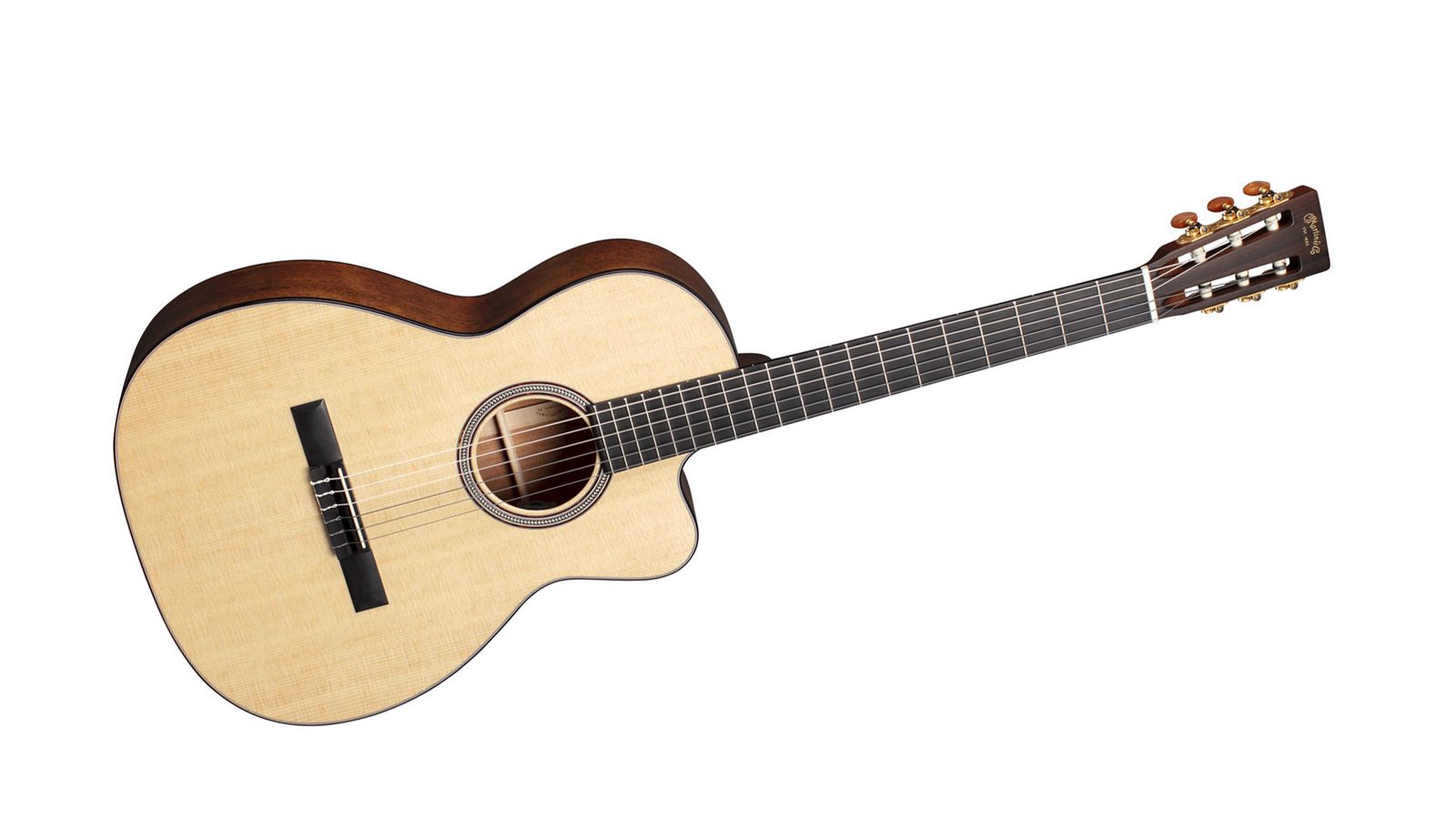
7. Martin 000C12-16E Nylon
Our expert review:
Specifications
Reasons to buy
Reasons to avoid
✅ Buy if you want something a little different: Taking a unique approach to construction, this guitar features a Spruce top and Mahogany back sides, which is very unusual on a classical guitar.
❌ Avoid if you like traditional instruments: If you're about pure classical guitar construction, then you're not likely to find a lot to love here.
If we had to name one brand that epitomizes nylon-string guitar heritage and production, then Martin wouldn’t be on our shortlist. Not even close. Steel-string guitars? Yes, absolutely, it’s hard to think of a brand that’s been more, ahem, instrumental in that area. But nylon? No.
Which is why the 000C12-16E is a bit of a curiosity. The nut is slightly narrow for a traditional classical guitar, it has a cutaway, X-bracing and is equipped with a very tasty Fishman Matrix Enhance NT1 preamp and pickup system. The top is Sitka spruce, but the back and sides are mahogany, which is not a wood usually associated with classic nylon-string guitars.
Yet, Martin markets it for "classical guitarists looking to take their classical playing to the next level". In our opinion, this is a lovely, well-appointed guitar that boasts a rich, tight bass with wonderful top-end articulation. You know what? That unorthodox mahogany choice works a treat.
However, it’s clearly more of a crossover guitar than a concert instrument for classical players. If you’re a fan of Martin steel-string guitars but want to side-step into the world of nylon every now and again then this is just the guitar for you.
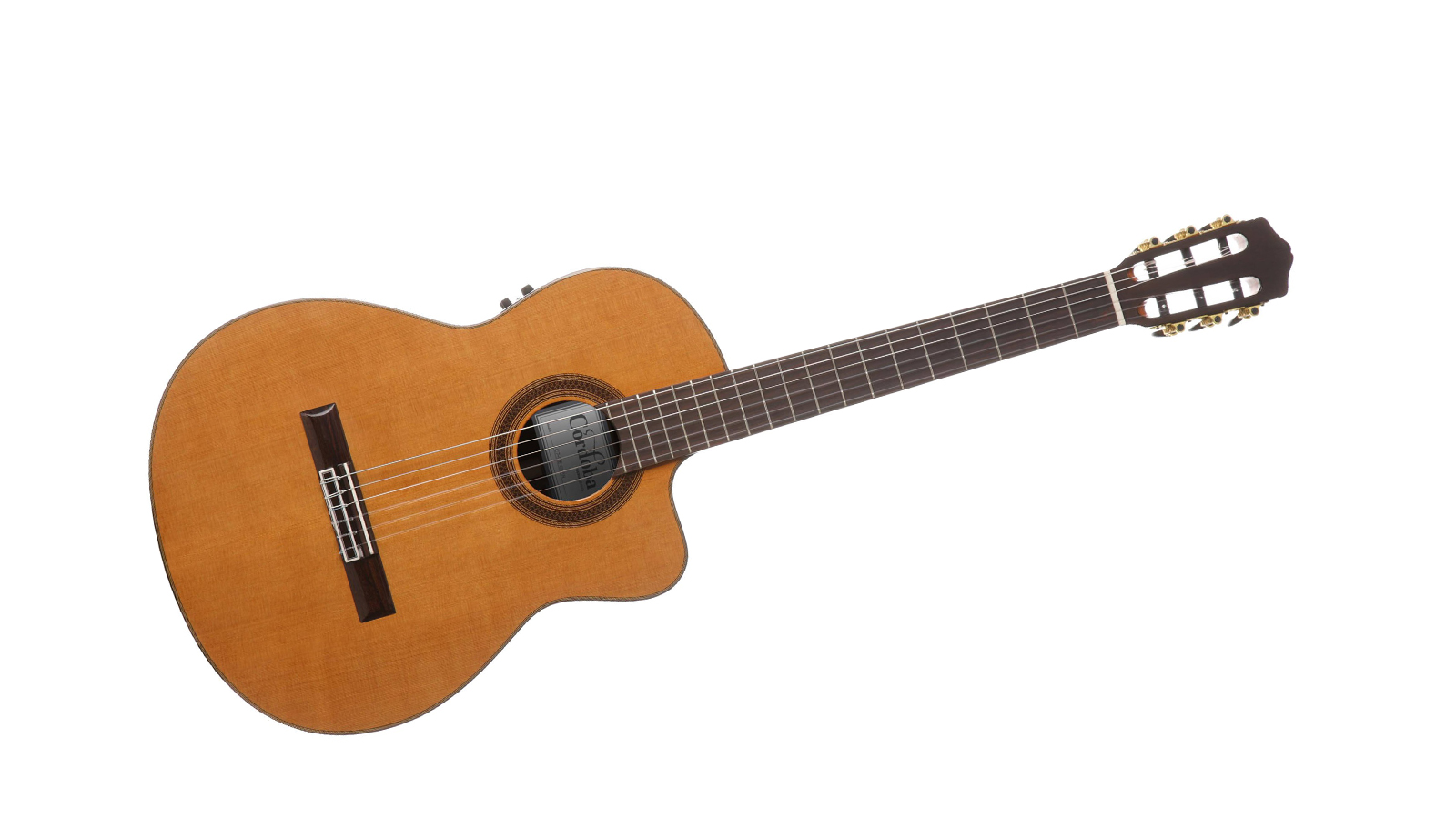
8. Cordoba C7-CE
Our expert review:
Specifications
Reasons to buy
Reasons to avoid
✅ Buy if you need a classical guitar to play live: With a piezo under-saddle pickup and an internal microphone, this guitar gives you some nice options when playing live.
❌ Avoid if you prefer modern guitars: The design here is traditional through and through, so if you're looking for ultra-fast playability then it might be wise to spend your money elsewhere.
Gigging musicians often require a certain level of quality and reliability from their guitars, and in the Cordoba C7-CE there exists an affordable, high quality guitar that would fit the bill nicely.
The C7-CE packs in some superb tone-woods, which elevate the guitar sonically and aesthetically, and the onboard Fishman electronics, which blends an under-saddle piezo with an internal microphone, allows for precise control over your amplified tone.
For the price, the Cordoba C7-CE is a pretty compelling package, and one we’re happy to recommend.
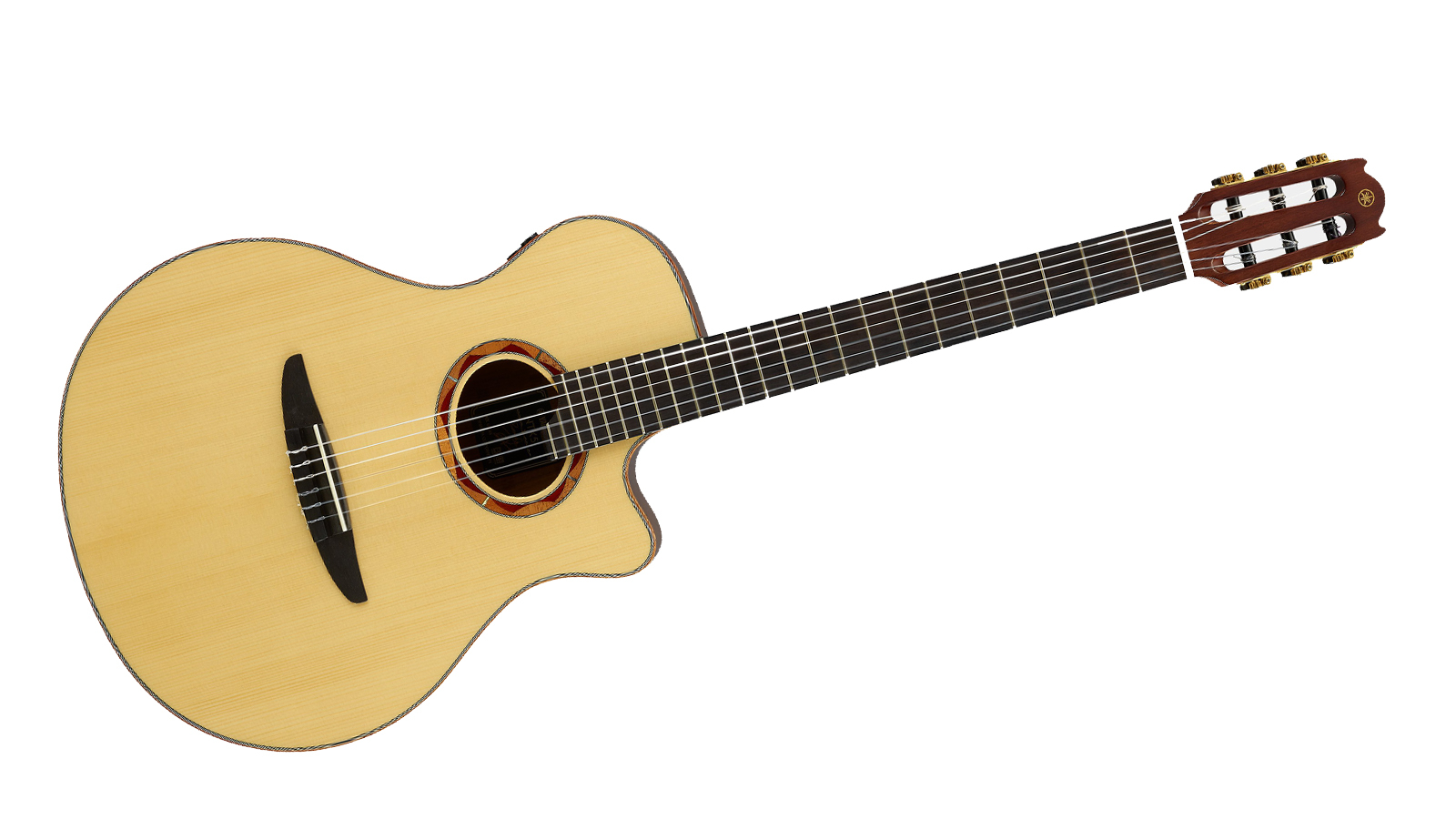
9. Yamaha NTX5
Our expert review:
Specifications
Reasons to buy
Reasons to avoid
✅ Buy if you value playability: With its beautifully fast playing neck and comfortable body dimensions, this guitar is great for those who value playability the most.
❌ Avoid if you prefer playing unplugged: Although the sound unplugged is fine, it doesn't quite compete with others on this list.
If you’re heavily into steel-string acoustics and electrics then you simply must consider adding some nylon, because it can bring an extra dimension – a contrasting texture – to your compositions.
Don’t fancy those huge necks and flat-as-a-board, ahem, boards? No worries, the NTX5 is just the ticket for performance or the studio. Its slim, soft-C shaped neck is easier to get your hand around than a bottle of Bud, and the narrow nut, 24-fret ebony board and Venetian cut-away make this one accessible guitar to play.
It’s a thinline, so it doesn’t sound all that unplugged, but hook it up to an amp or PA and you’ll find that Yamaha’s state-of-the-art Atmosfeel pickup and preamp system is simply incredible.
Like most Yamahas, especially those at this price point, the build is impeccable. Other than its unplugged sound, it’s hard to fault.
Read the full Yamaha NTX5 review
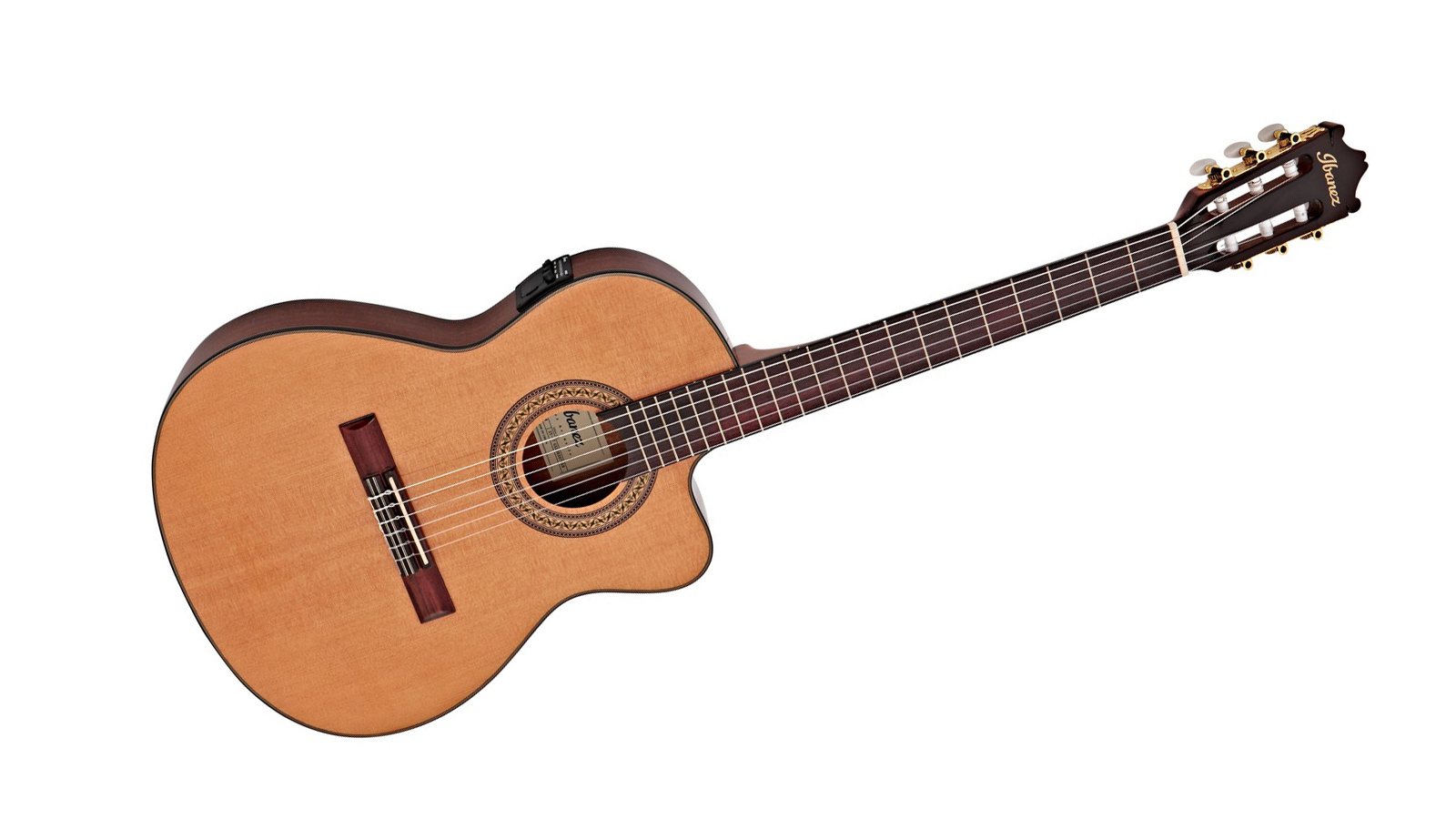
10. Ibanez GA5TCE
Our expert review:
Specifications
Reasons to buy
Reasons to avoid
✅ Buy if you want a comfortable classical: The thinline body of this classical guitar makes it an excellent choice for those who want to play for long periods of time.
❌ Avoid if you prefer traditional classical tones: With its spruce top and sapele back and sides, this isn't the traditional classical tone that some players might expect.
There’s a lot to love about the poetically named GA5TCE. Okay, we’re being sarcastic about the name (who thinks these things up?), but this is a whole lot of performance guitar for not a lot of money.
You get a thinline body for comfort and feedback rejection, a cutaway for upper fret access, a spruce top and Ibanez’s AEQ-2T preamp system with undersaddle pickup. It’s a fine-looking guitar too, with its neat, eye-catching rosette and smart gold tuners.
Like all thinlines, it sounds a bit wishy-washy in purely acoustic mode, but plug it in and it transforms into a rich tone monster that’s eager to be let loose on stage. It represents amazing value for a performance-ready guitar from a big brand such as Ibanez.
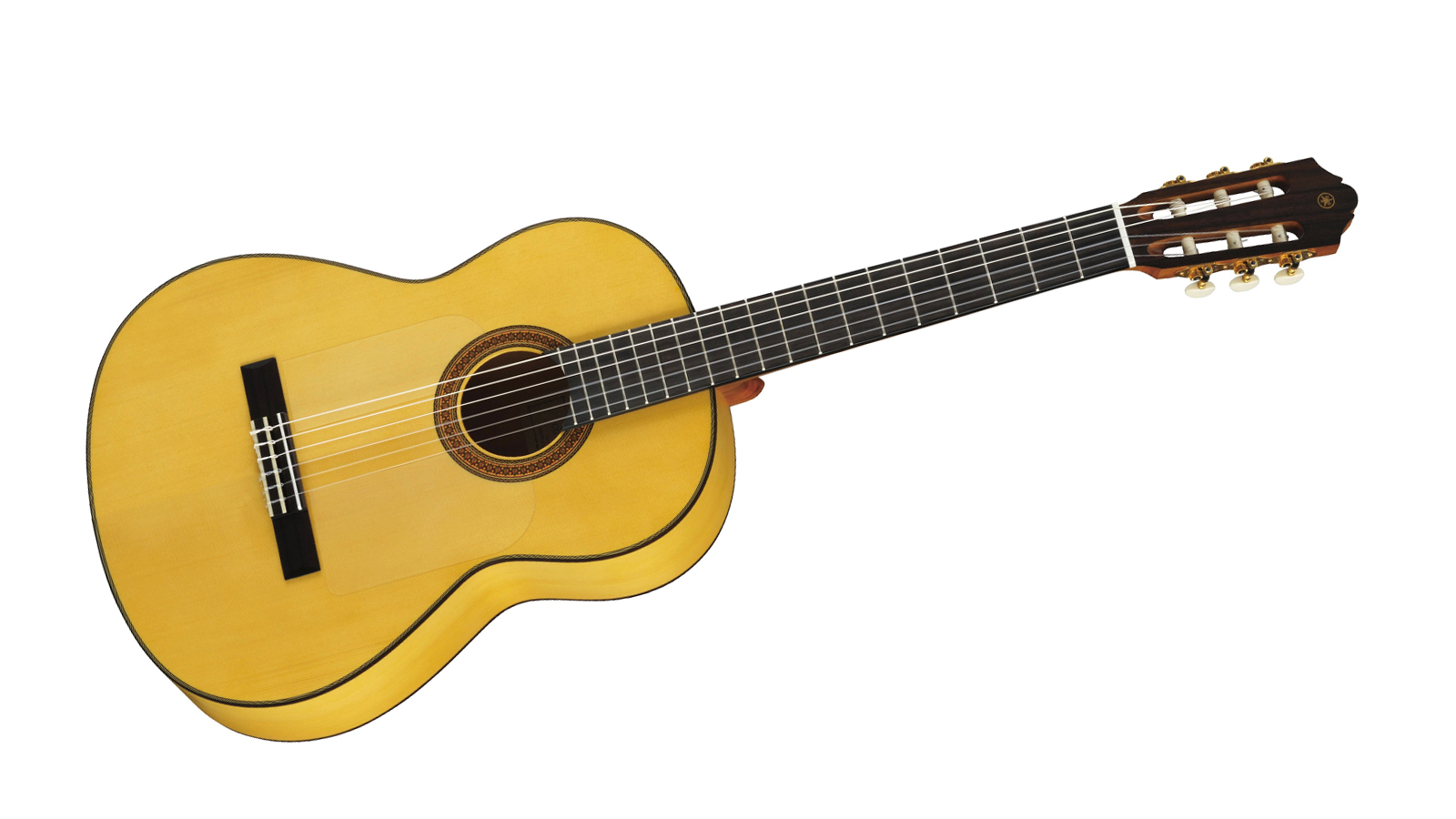
11. Yamaha CG182SF
Our expert review:
Specifications
Reasons to buy
Reasons to avoid
✅ Buy if you want a great beginner classical: With its low entry cost and quality build, this is an excellent guitar for those looking to make their first foray into classical guitar playing.
❌ Avoid if you want a more 'pro-level' guitar: This is a beginner instrument, which means it lacks the tonal depth of some of the more expensive options here.
Good flamenco guitars are niche instruments that command high prices, so it’s rare to find one this inexpensive. Yes, it may have been made in a factory far from Spain, but its build, materials and tone are still authentic enough to conjure visions of dark, sultry evenings misspent in the Sacromonte.
True to form, its back and sides are made from cypress, albeit laminate, while the top is a rather handsome piece of solid Engelman spruce. The bridge is rosewood, as is the wide fingerboard, which terminates at a 52mm nut. The action is low, which is typical for a flamenco guitar, but it also makes the CG182SF an easier guitar to play for crossover steel players.
This is a punchy flamenco guitar with a sharp attack, little sustain, a bright tone and good projection. Just as it should be for practicing your finest Rasgueado technique!
Read our full Yamaha CG182SF review
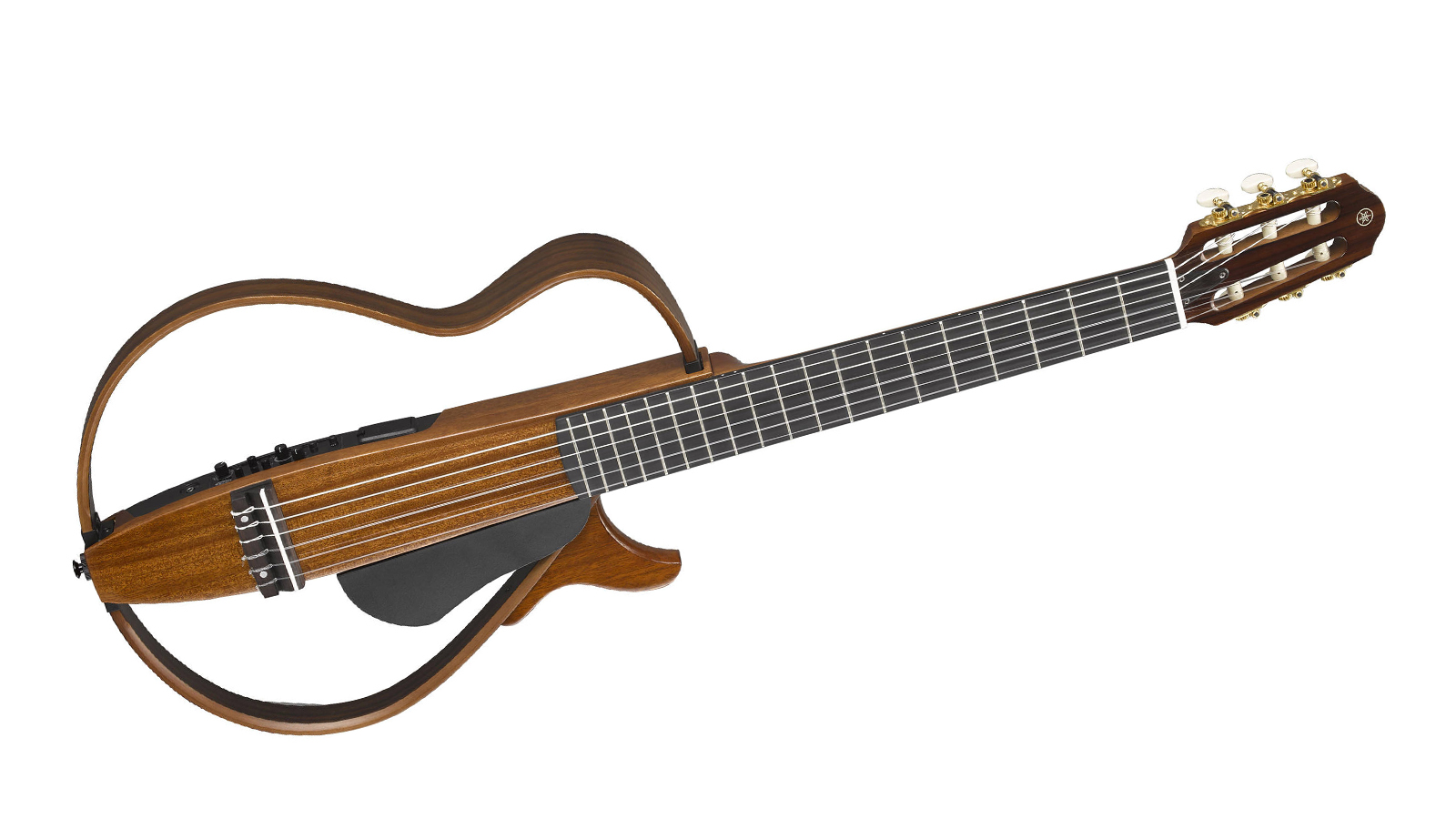
12. Yamaha SLG200NW
Our expert review:
Specifications
Reasons to buy
Reasons to avoid
✅ Buy if you want silent practice and live playing: The unique design of this guitar makes it great for quiet practice with a built-in headphone slot, and fantastic for live performances too.
❌ Avoid if you want to play unplugged: Of course with a nontraditional body design like this, you can't really play this guitar unplugged.
One of the least conventional looking options on here, the Yamaha Silent Classical Guitar is great for those that don’t want the volume usually associated with an acoustic instrument. Playing this unplugged, you can hear it, but people in the next room probably won’t, so you’re not going to bug them whilst you’re perfecting your scales and exam pieces.
The guitar really comes to life when you plug it into an amp. It has a lovely, warm and rich sound – though should you want to take advantage of this whilst practising quietly, you can always use headphones with the amp. The clever on-board electronics also allow you to plug into an interface and get the sound of a well mic’d-up guitar, so it’s ideal for home recording. It’s even collapsable, with the body of the guitar breaking down making it one of the best classical guitars for travelling with.
Best classical guitars: Buying advice
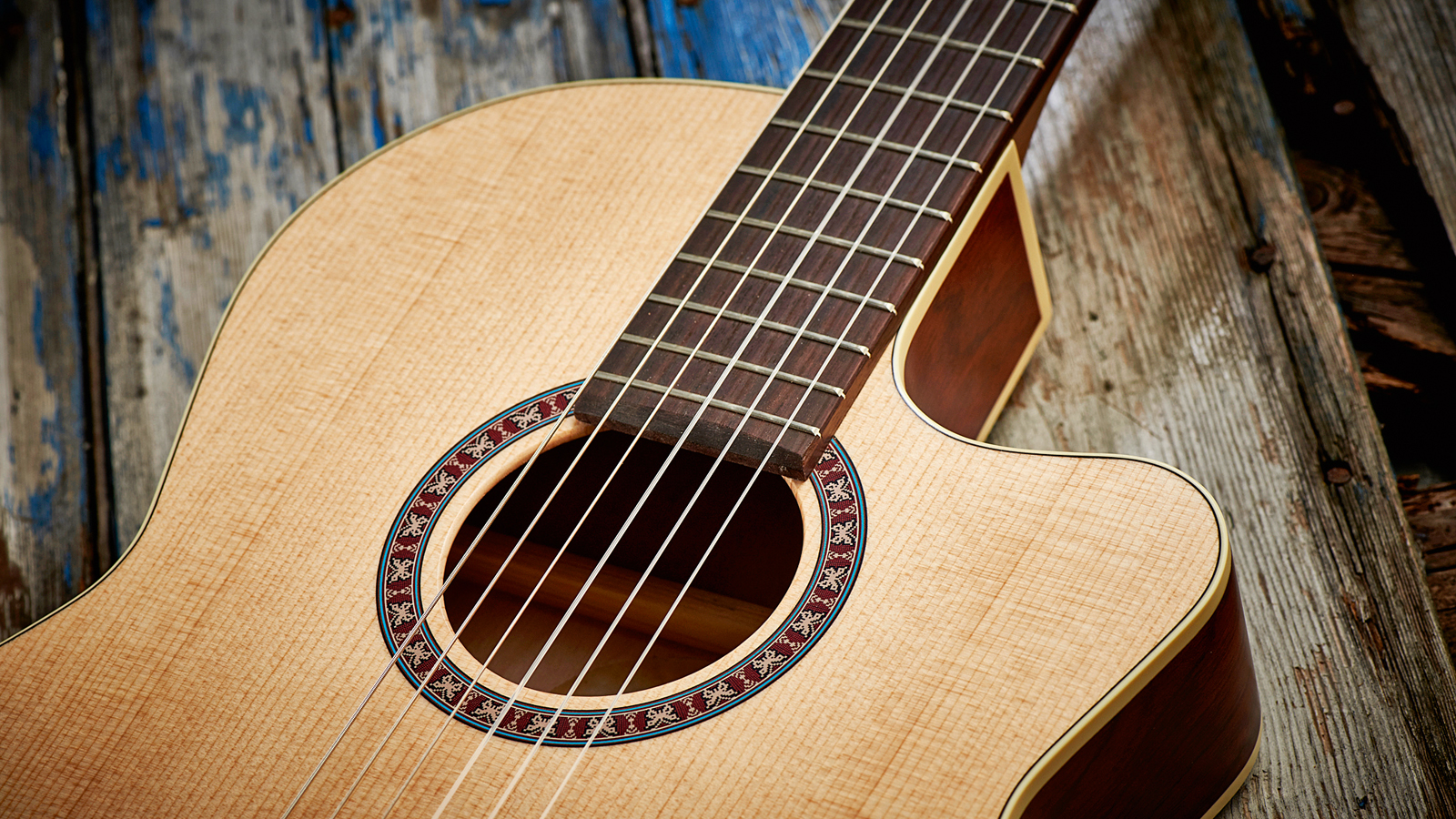
If you’re looking for a nylon-string guitar specifically, as opposed to a general purpose acoustic guitar, then the chances are that you play classical, flamenco, jazz or Latin styles. Beyond the obvious tonal differences, these genres require a guitar that is geared towards the unique playing techniques involved. Most steel-strung acoustics simply don’t provide enough finger real-estate in which to work your magic.
What is the difference between a nylon-string classical guitar and a steel-strung acoustic guitar?
To the untrained eye, some of the best classical guitars look quite similar to steel-string acoustic guitars, however it’s worth highlighting some of the key differences. Firstly, classical guitars are strung with nylon strings giving them a softer, warmer and more mellow sound. Whilst you can use a pick with a classical guitar, most tend to play fingerstyle – the string spacing has been designed so that you can get your fingers in a little easier.
Because nylon strings exert less tension than steel strings, classical guitars will be braced lighter than most acoustics. That means they don’t need as many pieces of wood on the underside of the body’s top, making them physically lighter and also a little easier for players with a soft touch to get some volume out of.
Whether you’re just starting out, or you’re already experienced on a steel string or electric, one thing to keep an eye on is the neck width. Most classical guitars will have a wider neck width than a steel string or electric, so if you’re making the jump, then you’ll certainly notice the difference.
Classical guitars are usually wider body than steel-strung acoustics too. The difference isn’t huge, but for players of a smaller stature, or those who struggle to get their arm over the body, then this might be something to consider. However, don’t fret – some manufacturers have built classical guitars to appeal especially to those crossing over that feature things like a more manageable neck width and a slimmer body.
What is a crossover classical guitar?
As we’ve just mentioned, a nylon-strung neck can be a real handful, more than some steel-string players are willing to stretch their hands or their heads around. Still, if you’re really sold on adding some rich, warm nylon acoustic tones to your compositions there is a solution.
In recent decades many brands have introduced nylon crossover guitars to their catalogs. These often look a lot like steel-string guitars, yet they’re strung with nylon. The headstock and tuners are a giveaway, but the necks are comfortably thin, the fingerboards are radiused and the bodies often feature cutaways and electric pickup systems for amplified performance. Many are designed as thinlines to guard against feedback when amplified.
Frankly, most serious classical players won’t touch them with a bargepole, but they’re fantastic for crossover artists, as well as players into jazz and Latin styles.
Are flamenco and classical guitars the same?
Nylon string guitars are used for flamenco and classical music. Some players like to use them to play jazz, pop and soul too – it’s really up to you. Some features found on these guitars do make them more suitable than others for certain styles of music, for example, a lot of classical players like a warm tone that sustains nicely, whereas flamenco players are often playing faster passages and so like a bright, snappy tone. They may also use the guitar in a more percussive way. Different wood combinations can help you achieve the tone you’re after, so bear that in mind when shopping for the best classical guitar for you.
What wood is best for classical guitars?
The wood that classical guitars are made from has a big impact on what they sound like. Spruce tops are quite commonplace. They usually help lend quite a bright tone – nice and crisp, allowing for lots of detail in the sound. Cedar tops are also quite popular in classical guitars, and tend to sound a little warmer and darker.
The wood used for the back and sides also affects the sound you get out of the guitar. This can vary quite a bit, though rosewood and its derivatives are used a lot. Rosewood is a balanced tonewood, with a strong top end, punchy mids and a nice bass response too. You might see woods like cypress being used on flamenco guitars, as this can be quite bright and percussive sounding, making it ideal for the style of music.
Are classical guitars good for beginners?
While the technique of playing a nylon-strung guitar is slightly different from a steel-strung one, the skills are most definitely transferable. Nylon-string guitars are readily available in smaller sizes that can be easier for young kids to hold, and the softer strings are unquestionably kinder on their fingers.
That said, there can be a few issues – the main one being the wider neck and string spacing. While it's not impossible for little ones to play, a nylon-string guitar can be more challenging, so the potential neck width awkwardness is worth bearing in mind.
It's also worth noting the differences in tone, which can result in a rather uninspiring experience for beginners trying to emulate their pop and rock heroes. So, if you are planning on strumming your way through a bunch of cowboy chords, best to stick to a steel-string acoustic guitar.
How much should I spend on a classical guitar?
Like ‘regular’ acoustics, classical guitars come in various styles and cover a wide range of price points, from beginner classical guitars to hand-made artisan models and everything in between – but how much you choose to spend really boils down to what you want from your new guitar.
For absolute beginners and young kids, a $100 entry-level instrument will more than do the job, and will certainly allow you to see if this is the guitar style for you. Intermediates, or established players looking for a classical to use on recordings, may want to look around the $500 mark. This will get you an instrument of a certain quality, and with so many options out there you won't be short of choice.
For professional players, you'll be looking at $600-plus, and if you can stretch to it, you'll want to go for an all-solid option. This will get you the richest and most complex tone possible.
Find out more about how we make our recommendations and how we test each of the products in our buyer's guides.
- Follow our guide on how to restring a classical guitar
How we selected the products for this guide

Here at Guitar World, we are experts in our field, with many years of playing and product testing between us. We live and breathe everything guitar and bass related, and we draw on this knowledge and experience of using products in live, recording and rehearsal scenarios when selecting the products for our guides.
When choosing what we believe to be the best classical guitars available right now, we combine our hands-on experience, user reviews and testimonies and engage in lengthy discussions with our editorial colleagues to reach a consensus about the top products in any given category.
First and foremost, we are guitarists, and we want other players to find the right product for them. So we take into careful consideration everything from budget to feature set, ease of use and durability to come up with a list of what we can safely say are the best classical guitars on the market right now.
Read more about our rating system, how we choose the gear we feature, and exactly how we test each product.
Related buyer's guides
- Acoustic guitar vs classical guitar: what’s the difference?
- Best acoustic guitars for beginners: easy strummers for new players
- Downsize to one of the best 3/4 acoustic guitars
- Freshen up with the best acoustic guitar strings
- Our top picks for the best acoustic guitars under $500
- 10 best acoustic guitars under $1,000: great tone for less
All the latest guitar news, interviews, lessons, reviews, deals and more, direct to your inbox!
Chris Corfield is a journalist with over 12 years of experience writing for some of the music world's biggest brands including Orange Amplification, MusicRadar, Guitar World, Total Guitar and Dawsons Music. Chris loves getting nerdy about everything from guitar gear and synths, to microphones and music production hardware.
- Matt McCrackenJunior Deals Writer
- Richard Blenkinsop
- Simon Fellows
- Daryl RobertsonSenior Deals Writer
